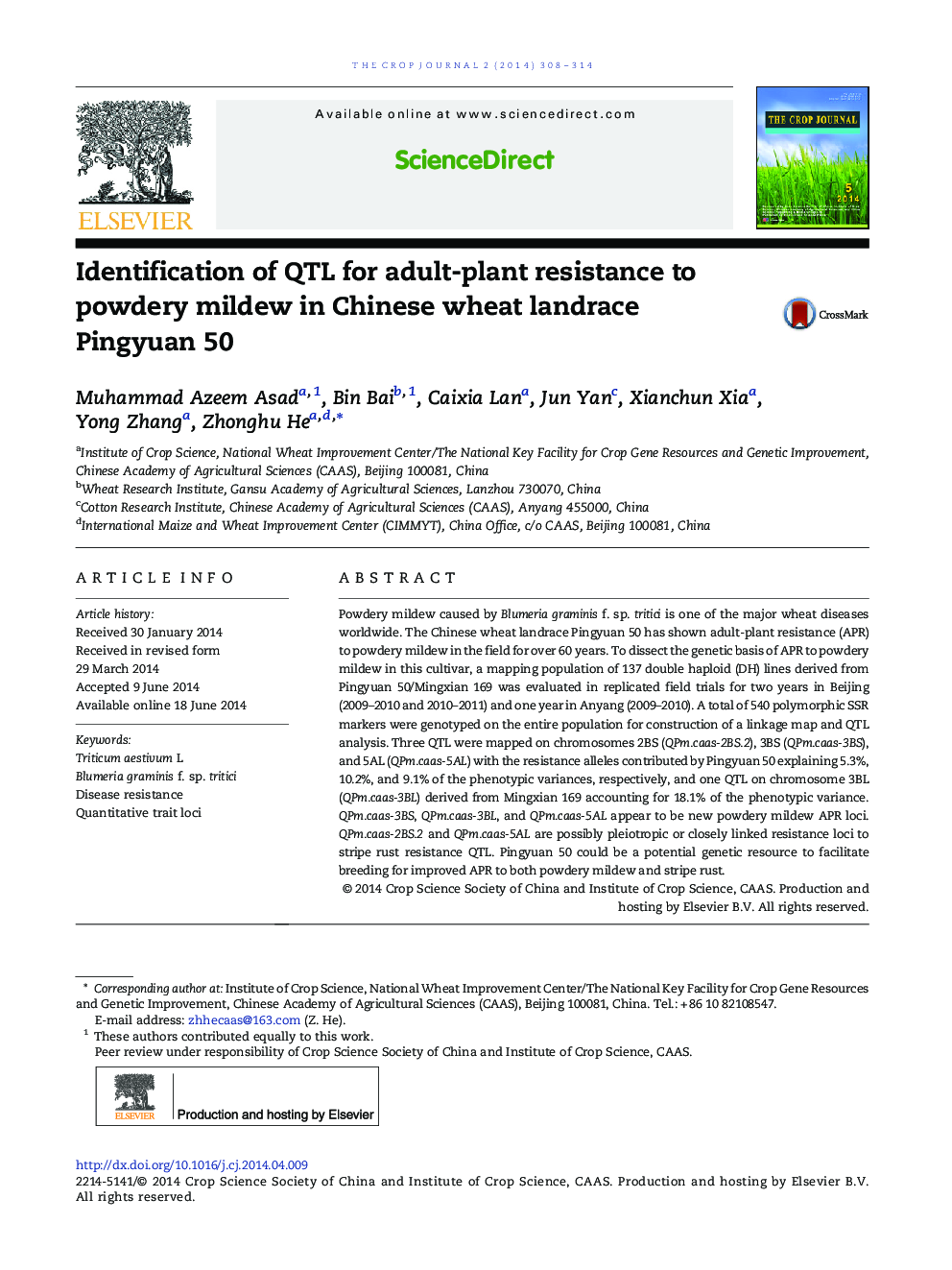| Article ID | Journal | Published Year | Pages | File Type |
|---|---|---|---|---|
| 2079513 | The Crop Journal | 2014 | 7 Pages |
Powdery mildew caused by Blumeria graminis f. sp. tritici is one of the major wheat diseases worldwide. The Chinese wheat landrace Pingyuan 50 has shown adult-plant resistance (APR) to powdery mildew in the field for over 60 years. To dissect the genetic basis of APR to powdery mildew in this cultivar, a mapping population of 137 double haploid (DH) lines derived from Pingyuan 50/Mingxian 169 was evaluated in replicated field trials for two years in Beijing (2009–2010 and 2010–2011) and one year in Anyang (2009–2010). A total of 540 polymorphic SSR markers were genotyped on the entire population for construction of a linkage map and QTL analysis. Three QTL were mapped on chromosomes 2BS (QPm.caas-2BS.2), 3BS (QPm.caas-3BS), and 5AL (QPm.caas-5AL) with the resistance alleles contributed by Pingyuan 50 explaining 5.3%, 10.2%, and 9.1% of the phenotypic variances, respectively, and one QTL on chromosome 3BL (QPm.caas-3BL) derived from Mingxian 169 accounting for 18.1% of the phenotypic variance. QPm.caas-3BS, QPm.caas-3BL, and QPm.caas-5AL appear to be new powdery mildew APR loci. QPm.caas-2BS.2 and QPm.caas-5AL are possibly pleiotropic or closely linked resistance loci to stripe rust resistance QTL. Pingyuan 50 could be a potential genetic resource to facilitate breeding for improved APR to both powdery mildew and stripe rust.
